“The woman who follows the crowd will usually go no further than the crowd.
The woman who walks alone is likely to find herself in places no one has ever been before.”
– Albert Einstein
§ § §
Let’s begin with an indisputable fact of nature. No one has ever travelled around the world using an automobile as the means of transportation… ever. Can’t be done. Geography is a bitch in that regard, always putting seawater in the way of a good ribbon of blacktop, or even a navigable dirt road for that matter. Nope, sorry – can’t get there from here.
This doesn’t stop people from suggesting they have, or will do just that – drive around the world.
However, take away the literal context of the journey, and add a ship or three to assist in the ‘portaging’ of said vehicle across vast expanses of ocean, and attempts to accomplish such a feat take on a competitive edginess.
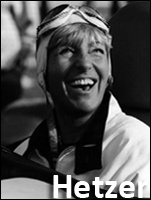 History shows that for well over a hundred years many would-be thrill-seekers, from all walks of life, have attempted to circumnavigate the globe by car, several also laying siege to the claim of having been the first to do so. Whether merely pursuing a sense of adventure, participating in sponsored or money-making schemes, or simply for the bragging rights, the words ‘drive around the world’ have always held a certain sense of freedom, excitement and escape, even danger. And it’s not just men who have fallen victim to this internal combustion version of wanderlust – women have not only tackled this ‘extreme’ pursuit, they have excelled.
History shows that for well over a hundred years many would-be thrill-seekers, from all walks of life, have attempted to circumnavigate the globe by car, several also laying siege to the claim of having been the first to do so. Whether merely pursuing a sense of adventure, participating in sponsored or money-making schemes, or simply for the bragging rights, the words ‘drive around the world’ have always held a certain sense of freedom, excitement and escape, even danger. And it’s not just men who have fallen victim to this internal combustion version of wanderlust – women have not only tackled this ‘extreme’ pursuit, they have excelled.
Heidi Hetzer hopes to be one of those women. And therein lies the beginning of a story with more twists and turns than the Nürburgring.
TO INFINITY, AND BEYOND
Heidi owns one of the largest automobile dealership chains in Germany, and cars have always been a part of her life. She is also a race car driver and has competed in many major races including international rallies such as the famous ‘Mille Miglia‘. In 2013, she embarked on her dream quest in her treasured Hispano-Suiza roadster. The car is 91-years-old. Heidi is 75.
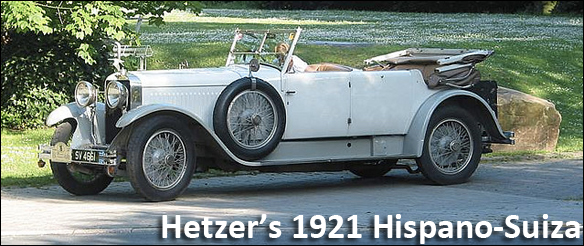
As Heidi tells it, the inspiration for her long trip comes from a book she read a few years ago about the first woman to drive around the world, a feat completed back in 1929. Heidi thought: ‘Why not me? I can do that, too.’
That ‘first woman’ Heidi read about was fellow German, Clärenore Stinnes. Like Heidi, cars were in Miss Stinnes’ blood, and she was an avid racer. She competed in dozens of automotive competitions and won seventeen first-place trophies by 1927 when she was barely 26-years-old. By then, she was famous throughout Europe for her driving prowess.
Attempting to duplicate this amazing feat of geographical tenacity and skill, if not stamina, is remarkable, especially for someone like Heidi who is now approaching octogenarian status. And taking nothing away from Miss Stinnes’ original accomplishment, Heidi’s plan of following in the footsteps of the first women to drive around the world would be amazing but for one not-so-small detail. With all due respect to Heidi, the story’s not true.
Clärenore Stinnes was not the first woman to drive around the world. Aloha Wanderwell was.
BUMPER TO BUMPER
In a world of competitive ‘firsts’ – first person to reach Antarctica, first person to sail the Pacific Ocean, first person to ascend Mt. Everest – the claim of ‘first person to drive around the world’ has had a murky history, with several men and women staking that claim. Even the Guinness Book of World Records recognizes this (and they get it wrong, too).
But let’s compare these two women and put their accomplishments side-by-side.
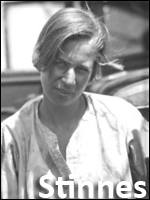 Clärenore Stinnes left Berlin, Germany on May 25, 1927, at the age of 26 in an Adler Standard 6 automobile. She was accompanied by a cinematographer named Carl (whom she subsequently married), two mechanics, and a support vehicle containing spare parts and equipment. The entire venture was supported by the German automotive industry to the tune of 100,000 Reichsmarks – about $25,000 in 1927 (U.S.) dollars, which has a relative value over $300,000 today. Using ferries, ships and other modes of assisted transportation, Miss Stinnes and company returned to Berlin two years after departure.
Clärenore Stinnes left Berlin, Germany on May 25, 1927, at the age of 26 in an Adler Standard 6 automobile. She was accompanied by a cinematographer named Carl (whom she subsequently married), two mechanics, and a support vehicle containing spare parts and equipment. The entire venture was supported by the German automotive industry to the tune of 100,000 Reichsmarks – about $25,000 in 1927 (U.S.) dollars, which has a relative value over $300,000 today. Using ferries, ships and other modes of assisted transportation, Miss Stinnes and company returned to Berlin two years after departure.
Aloha Wanderwell left Nice, France on December 29, 1922, having recently celebrated her 16th birthday. She was accompanied by a Polish 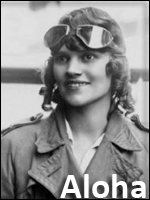 adventurer and cinematographer named Walter (whom she subsequently married) driving a modified Model-T Ford. This particular ‘Tin Lizzie’ had a canvas roof and plywood floorboards, but no windows. There were no support vehicles, no spare parts and no extra equipment. They had no external cash support whatsoever. The entire venture was supported solely by Aloha’s and Walter’s wits and resourcefulness. Using ferries, ships and other modes of assisted transportation, Miss Wanderwell and company returned to the south of France five years after departure.
adventurer and cinematographer named Walter (whom she subsequently married) driving a modified Model-T Ford. This particular ‘Tin Lizzie’ had a canvas roof and plywood floorboards, but no windows. There were no support vehicles, no spare parts and no extra equipment. They had no external cash support whatsoever. The entire venture was supported solely by Aloha’s and Walter’s wits and resourcefulness. Using ferries, ships and other modes of assisted transportation, Miss Wanderwell and company returned to the south of France five years after departure.
In short, Aloha not only began her circumnavigation of the globe while still a teenager, and more than four years prior to Miss Stinnes’ departure, she completed her trip while Clärenore was still on the road.
Was Clärenore Stinnes the first woman to drive around the world? No. Was she the fastest? Quite likely. But there can ever only be one ‘first’, and Aloha is it.
THE AMELIA EARHART OF THE OPEN ROAD
If you suspect that I have an axe to grind, or perhaps a hidden agenda in my telling this story, congratulations, you’re wearing the clever trousers today.
The world is full of people and events lost in the wisps of time. Aloha Wanderwell is one of those.

Aloha was once spoken of in the same company as Karen Blixen, Beryl Markham, Nellie Bly and Amelia Earhart. She was one of the most celebrated adventurers of her day. Her importance is such that museums the world over contain collections of Wanderwell memorabilia and artifacts from her global tours and explorations during the 1920s and 1930s. The Smithsonian Institution maintains a Wanderwell section in their archives for her films and photographs, and they regard her as one of the foremost ethnographers of her day.
Now, a new book will finally tell her amazing story. It will place her and her accomplishments – including being the First Woman to Drive Around the World – back into the pages of history where she rightfully belongs, and introduce her to a new audience.
The new book is called, “Aloha Wanderwell: The Border-Smashing, Record-Setting Life of the World’s Youngest Explorer”. It is the culmination of many years’ of research, travel, writing and editing by myself and my co-author, Chris Fink-Jensen.
To suggest this project had a long gestation period might give the false impression it was completed in nine months. It was not. The research phase alone took some years and plenty of international travel to both established and esoteric archives alike. The book was written once and rewritten three times because of the eye-popping discoveries we made while attempting to document this adventurous woman’s life and times.
Discovering that she was Canadian was the first revelation… how had we, nor anyone else, never heard of her?! Then, astonishingly, we found ‘Aloha Wanderwell’ was not her real name. We uncovered a birth certificate buried in government bureaucracy that revealed her true birth name and proved she was born in Winnipeg, and then raised in North Vancouver and Qualicum Beach on Vancouver Island. We unlocked a long-hidden tin box containing her personal diaries begun the first day she left the south of France in 1922 at the age of sixteen. We found her daughter living in an extended care facility in Honolulu, and her son living on a houseboat in Sausalito – both siblings now in their 80s – and two granddaughters. They all opened their homes, their hearts, and their memories to us, thrilled that we were going to tell Aloha’s story. But that wasn’t all we discovered.
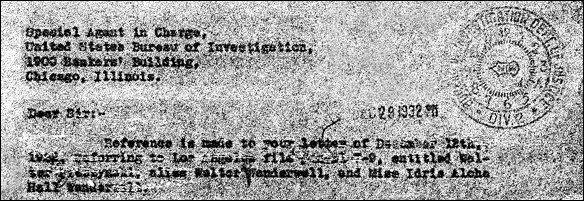
Some photographs and documents hidden amongst her personal memorabilia, and notes, references and marginalia scattered throughout her personal writings, contained references to people, events, places and dates that appeared, at first blush, to have no correlation to the story we were telling. Was there still more to this tale, more to her life and adventures that we hadn’t uncovered?
 Sixty Freedom of Information Act (FOIA – American) requests, a half dozen Access To Information Act (ATIA – Canadian) requests, queries to British government archives, and countless hours poring over subterranean historical material at the National Archives in Washington, D.C., revealed a second, completely unknown history buried in the shadows.
Sixty Freedom of Information Act (FOIA – American) requests, a half dozen Access To Information Act (ATIA – Canadian) requests, queries to British government archives, and countless hours poring over subterranean historical material at the National Archives in Washington, D.C., revealed a second, completely unknown history buried in the shadows.
Documents, internal memos, ‘action reports’ and even personal correspondence involving the FBI, the Justice Department, the Secret Service, 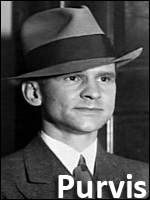 military intelligence on three continents, and the Immigration and Naturalization Service (now Homeland Security) revealed that Aloha and her companion Walter, were under constant surveillance. They were being investigated for various unsavory matters, including espionage. J. Edgar Hoover himself was so concerned about the Wanderwell’s world tour, he issued specific instructions to more than 20 FBI field offices requesting “…any and all information…” about their activities. Melvin Purvis, the G-Man who a few years later would ‘get’ gangster John Dillinger, was put in charge.
military intelligence on three continents, and the Immigration and Naturalization Service (now Homeland Security) revealed that Aloha and her companion Walter, were under constant surveillance. They were being investigated for various unsavory matters, including espionage. J. Edgar Hoover himself was so concerned about the Wanderwell’s world tour, he issued specific instructions to more than 20 FBI field offices requesting “…any and all information…” about their activities. Melvin Purvis, the G-Man who a few years later would ‘get’ gangster John Dillinger, was put in charge.
And then, of course, there was the murder. The killing that remains unsolved to this day. What about that…?
Aloha’s life was many things, boring was not one of them.
From the book’s publicity material:
“During the Roaring Twenties a young girl ventured to the ends of the earth armed with nothing but a car, a camera, a few companions, a make-up kit and an attitude. Within a few short years she had driven around the world, hunted elephants and tigers, dined with world leaders, dodged a Russian firing squad, fought alongside Chinese warlords, talked her way into and out of countless life-threatening confrontations and become the kind of media star only Hollywood could invent. She had also become the centerpiece of one of the biggest unsolved murder mysteries in American history. Her name was Aloha Wanderwell. This is a true story.”
PETAL TO THE METTLE
If you think that Aloha, Clärenore and Heidi are ‘vehicular’ exceptions, go stand in the corner.
The first long-distance journey by automobile was also a promotional tour, and the car’s very first endurance test. The year was 1894. The driver was Bertha Benz (yes, THAT Benz), wife of Carl who actually invented the motorcar.
The first person in history ever to pass a driving test was the French Duchess Anne d’Uzes. The Duchess was also the first person in history to ever receive a speeding ticket (you go girl!)
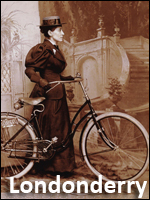 Then, of course, there’s Annie Londonderry (aka Annie Cohen Kopchovsky), the world’s first ‘spokes-woman’, so to speak. Annie was the first person to ‘drive around the world’ on TWO wheels. She bicycled her way from Boston and took the long way back… in 1895!
Then, of course, there’s Annie Londonderry (aka Annie Cohen Kopchovsky), the world’s first ‘spokes-woman’, so to speak. Annie was the first person to ‘drive around the world’ on TWO wheels. She bicycled her way from Boston and took the long way back… in 1895!
Women such as Violet Cordery, Alice Ramsey, Osa Johnson, Dorothy Levitt, and many, many more, all made their mark in the motorcar world long ago. And although Aloha was only 16-years-old when she began her life’s journey, other young girls were getting a head start even sooner. In 1916, the Girl Scouts of America introduced the ‘Automobiling Badge’ for which girls between the ages of 11 (!) and 17 had to demonstrate driving skill, auto mechanics, and first aid.
Ladies, start your engines!






No Comments